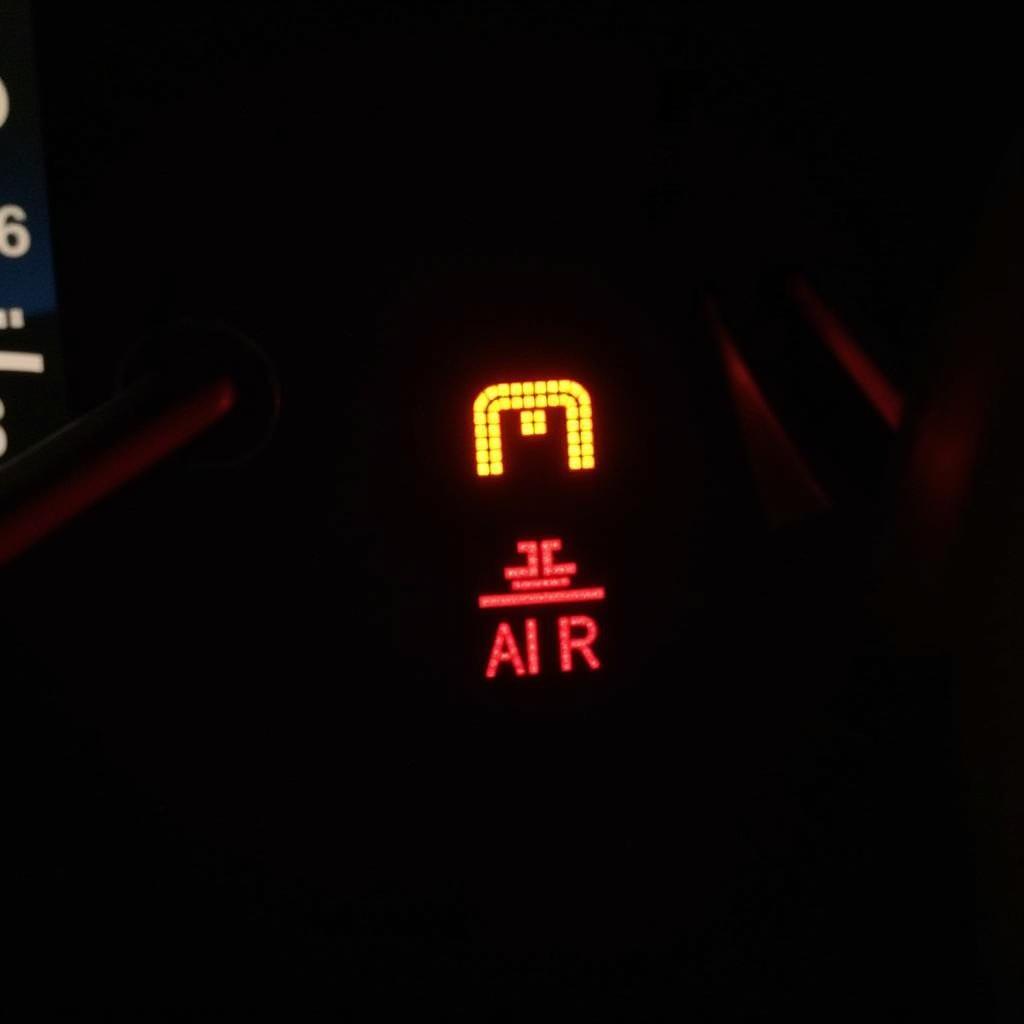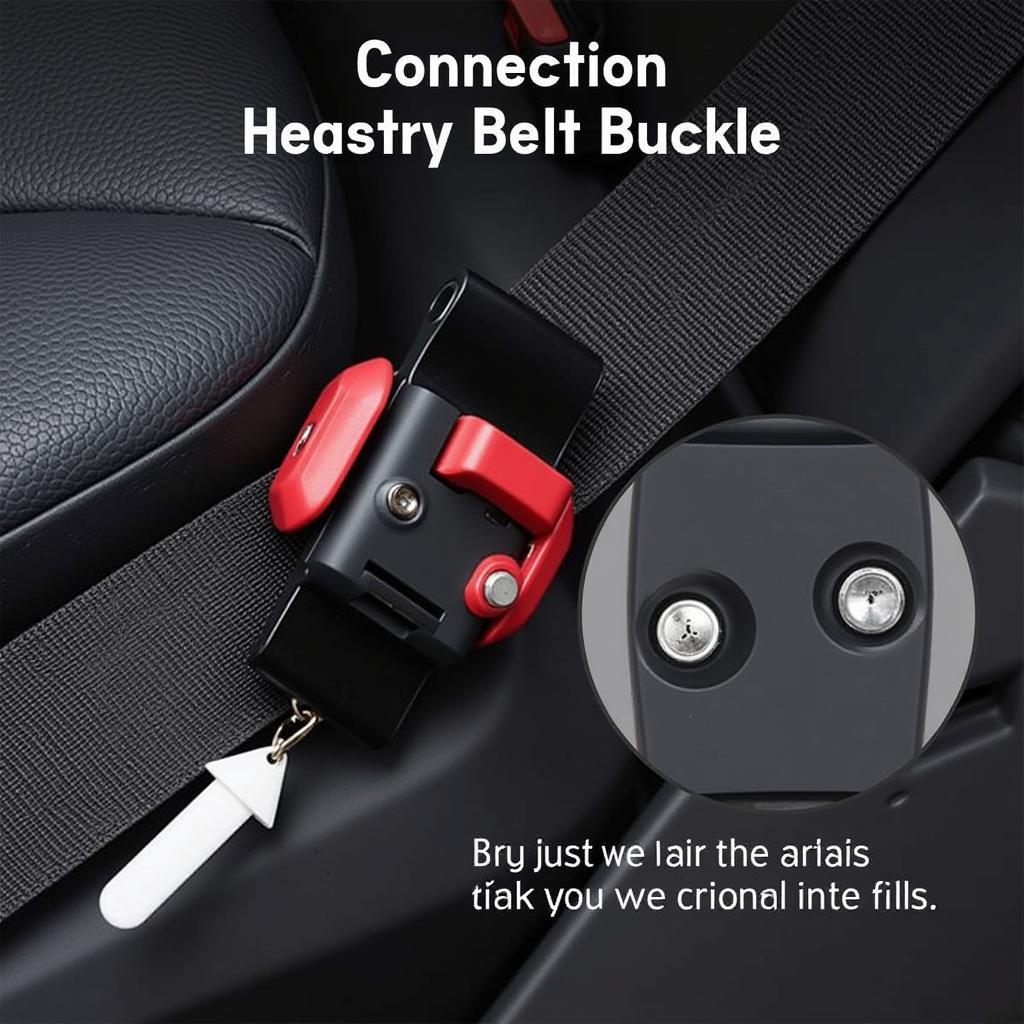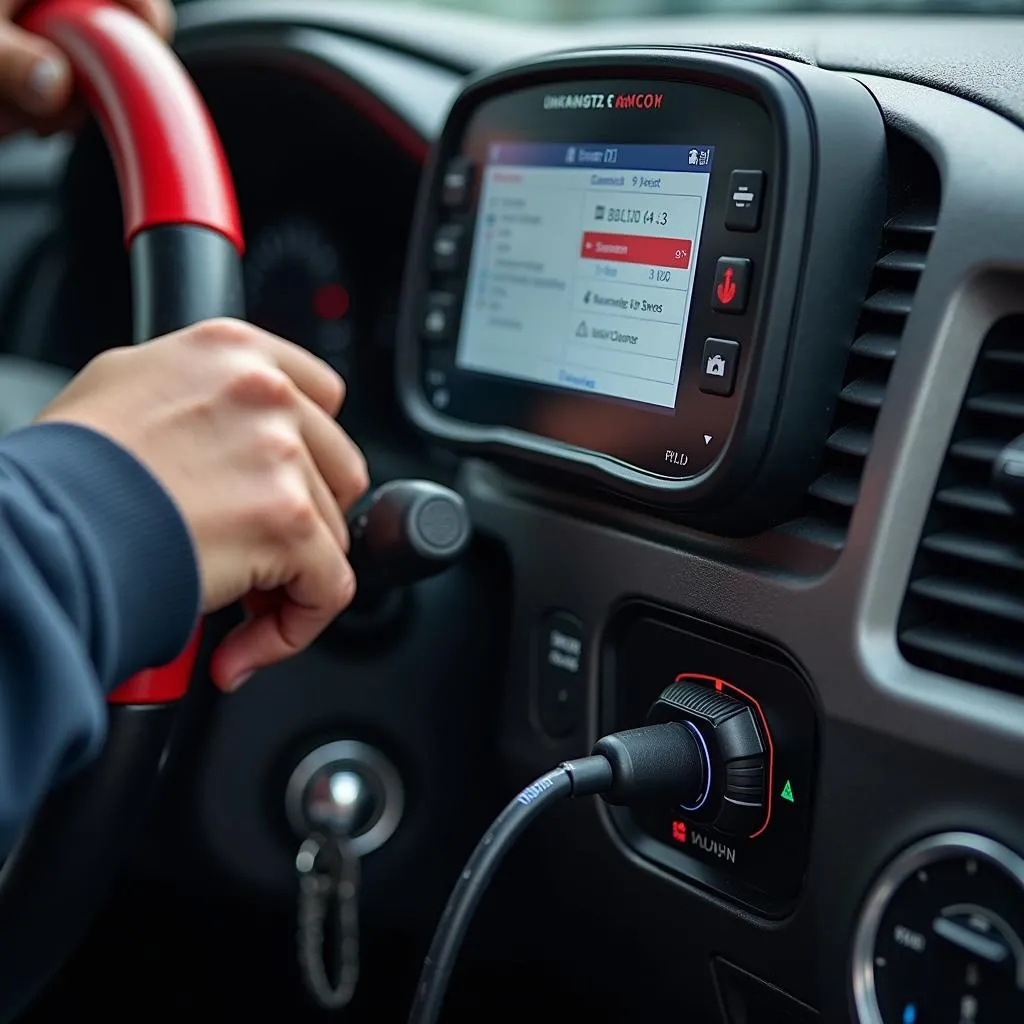Seeing a warning light illuminate on your BMW’s dashboard can be unsettling, especially when it involves your brakes. These warning lights are your car’s way of communicating potential issues that require your attention. While some lights might signal minor problems, others could indicate serious safety concerns that necessitate immediate action.
This comprehensive guide delves into the various BMW warning lights related to brakes, their meanings, and the steps you can take to diagnose and address the underlying issues.
Decoding Your BMW’s Brake Warning Lights
Your BMW utilizes a sophisticated system of sensors and warning lights to alert you about the status of your braking system. Understanding what each light signifies can be crucial in ensuring your safety and preventing further damage to your vehicle.
Here’s a breakdown of some common BMW warning lights related to brakes:
- Red Brake Warning Light: This light typically signals one of two major issues. It could indicate a significant drop in brake fluid level, often caused by a leak in the system. Alternatively, it could mean that there’s a problem with the brake system’s hydraulic pressure.
- Yellow Brake Pad Wear Indicator Light: This light alerts you when your brake pads have worn down to a certain point and require replacement.
- Amber ABS Warning Light: This light signifies a potential issue with your Anti-lock Braking System (ABS). While your regular brakes might still function, the ABS might not engage properly during emergency braking situations.
- DSC Warning Light: The Dynamic Stability Control (DSC) light, often appearing alongside the ABS warning light, indicates a problem with the vehicle’s stability control system, which plays a crucial role in maintaining traction and preventing skidding.
 BMW Brake Warning Lights Dashboard
BMW Brake Warning Lights Dashboard
Common Causes of BMW Brake Warning Lights
Understanding the potential causes behind these warning lights can help you narrow down the problem and seek appropriate solutions.
- Brake Fluid Leak: A leak in your brake lines, calipers, or wheel cylinders can lead to a loss of brake fluid, triggering the red brake warning light.
- Worn Brake Pads: Over time, brake pads naturally wear down with use. The brake pad wear sensor will activate the yellow warning light when the pads reach a critical thickness.
- Faulty ABS Sensors: Wheel speed sensors play a crucial role in the ABS system. A malfunctioning sensor can disrupt the system’s ability to detect wheel speed accurately, triggering the ABS warning light.
- Defective Brake Booster: The brake booster amplifies the force you apply to the brake pedal. A faulty booster can make your brakes feel stiff or unresponsive and might trigger warning lights.
What to Do When a Brake Warning Light Turns On
If you notice any brake warning light illuminated on your BMW’s dashboard, it’s essential to take the following steps:
- Assess the Situation: Determine the type of warning light illuminated and consider any recent changes in your vehicle’s braking performance.
- Pull Over Safely: If the red brake warning light is on or you experience any unusual braking behavior, safely pull over to the side of the road as soon as possible.
- Check Brake Fluid Level: If it’s safe to do so, carefully check your brake fluid level. If it’s low, do not continue driving.
- Seek Professional Help: Contact a qualified BMW mechanic or service center to diagnose and repair the issue. Driving with brake problems can be extremely dangerous, so it’s crucial to have the issue addressed promptly by a professional.
Remote Software Solutions for BMW Brake Issues
In some cases, BMW brake warning lights might be triggered by software-related glitches rather than mechanical faults. Advancements in automotive technology have led to the development of remote software solutions that can diagnose and potentially resolve these issues without the need for a physical visit to the workshop.
 Technician Performing Remote Diagnostics on a BMW
Technician Performing Remote Diagnostics on a BMW
Remote software solutions can address a range of brake-related issues, including:
- Software Bugs: Occasional software glitches in the car’s electronic control units (ECUs) can trigger false warning lights. Remote software updates can often rectify these issues.
- Sensor Calibration: Remote diagnostics might reveal the need for sensor recalibration, which can often be performed remotely without physical intervention.
- Module Programming: In some instances, reprogramming or updating specific modules related to the braking system might be necessary, and this can sometimes be accomplished remotely.
Expert Insight:
“Remote software solutions are changing the landscape of automotive repair. While they can’t address all issues, they offer a convenient and efficient way to diagnose and potentially resolve specific problems, including those related to brake warning lights,” says Mark Stevenson, a seasoned BMW technician with over 15 years of experience.
Maintaining Your BMW’s Braking System
Preventing brake problems starts with regular maintenance. Adhering to your BMW’s recommended maintenance schedule, which includes:
- Brake Inspections: Regular brake inspections can help identify potential issues early on, such as worn brake pads or leaks in the system.
- Brake Fluid Flush: BMW typically recommends a brake fluid flush every two years or as specified in your owner’s manual.
- Timely Repairs: Address any brake-related concerns promptly to prevent further damage and ensure optimal braking performance.
By following these maintenance practices and being proactive in addressing warning lights, you can contribute significantly to the longevity and reliability of your BMW’s braking system.
Conclusion
Understanding your BMW’s warning lights, particularly those related to your brakes, is paramount for safe and enjoyable driving. By recognizing the different lights, understanding their implications, and taking prompt action, you can ensure the optimal performance and safety of your vehicle’s braking system. Remember that professional diagnostics and repair are crucial when dealing with brake issues, and exploring remote software solutions can sometimes provide efficient and convenient solutions. By staying informed and proactive, you can enjoy peace of mind knowing that your BMW’s braking system is in top condition.


